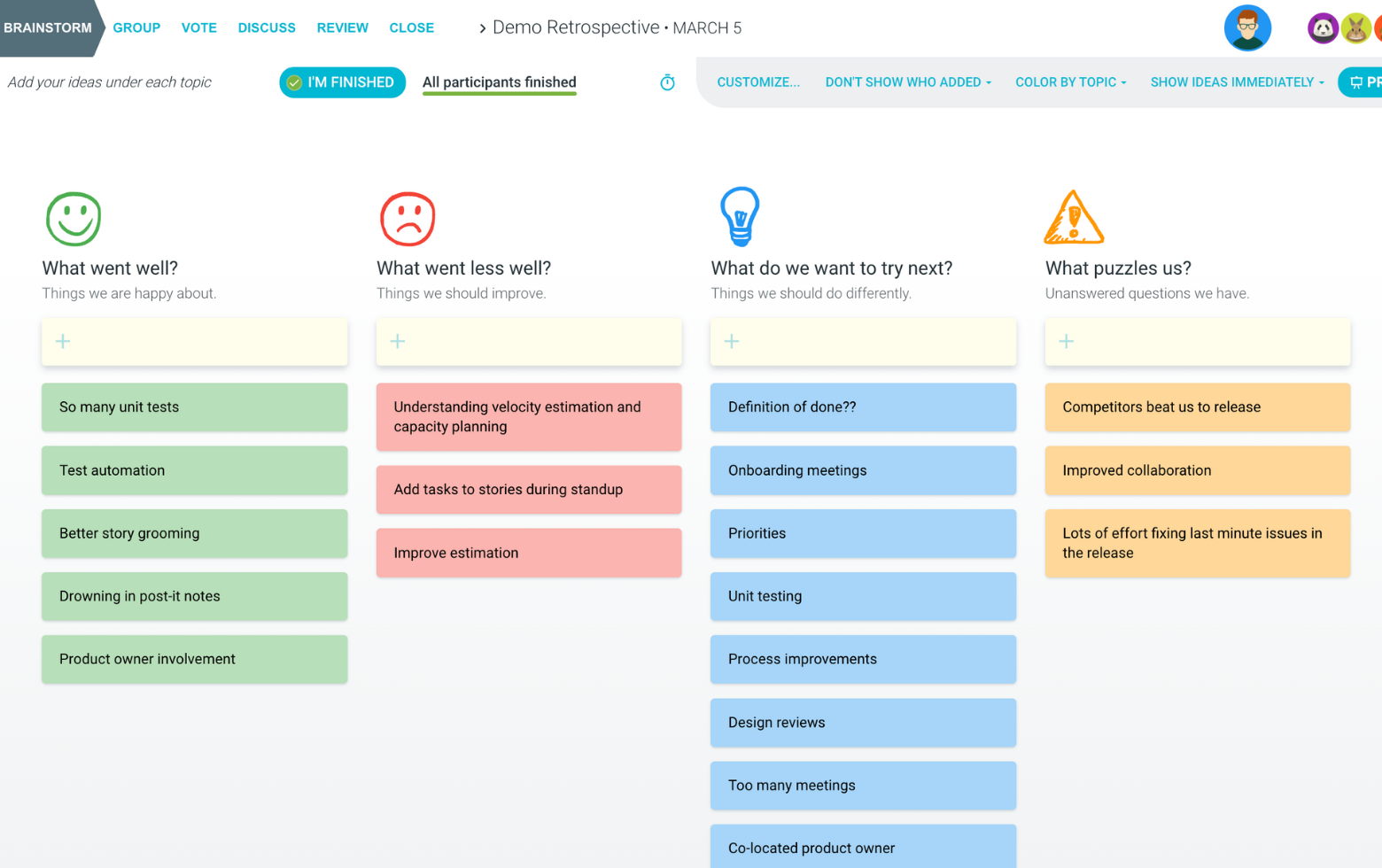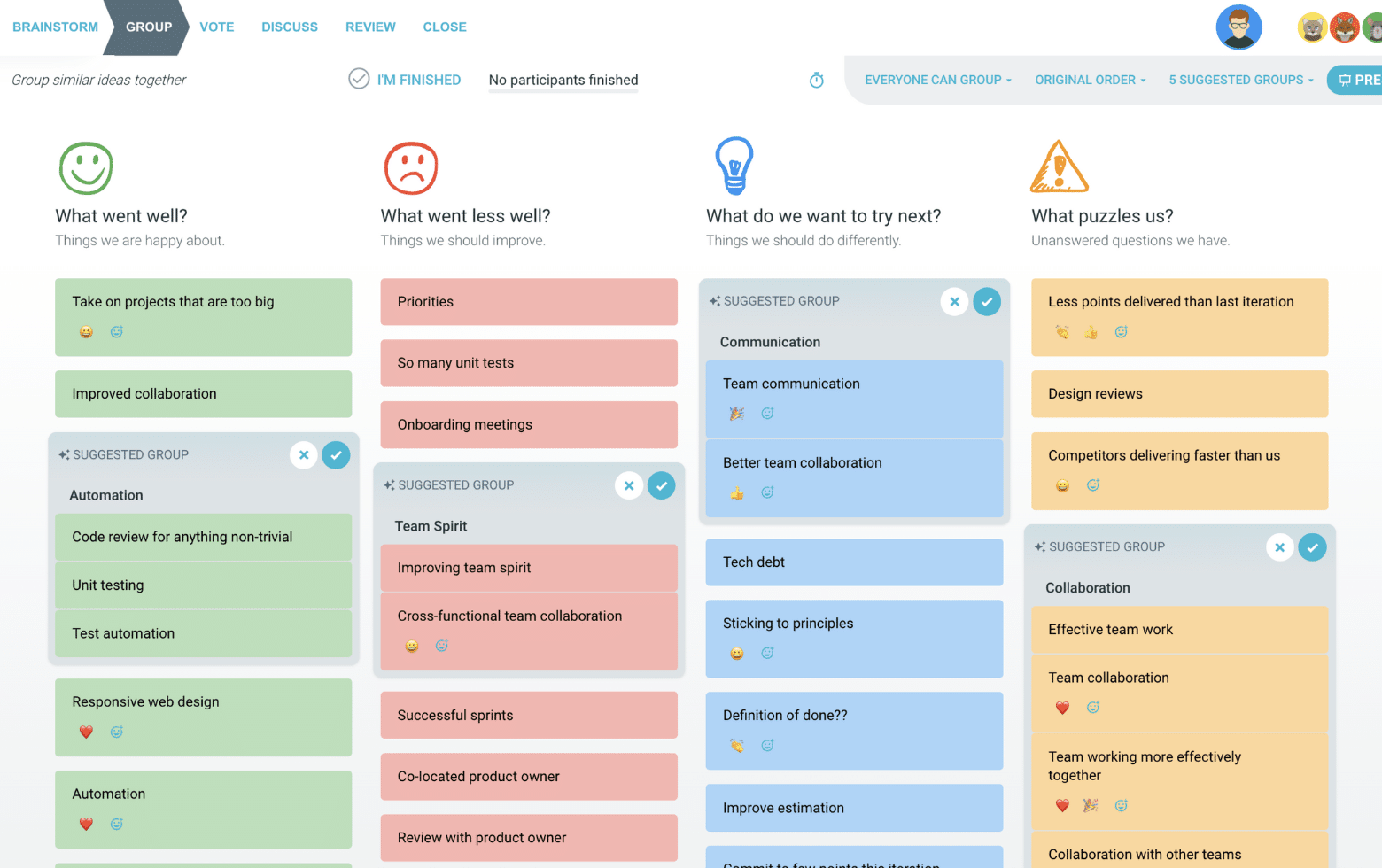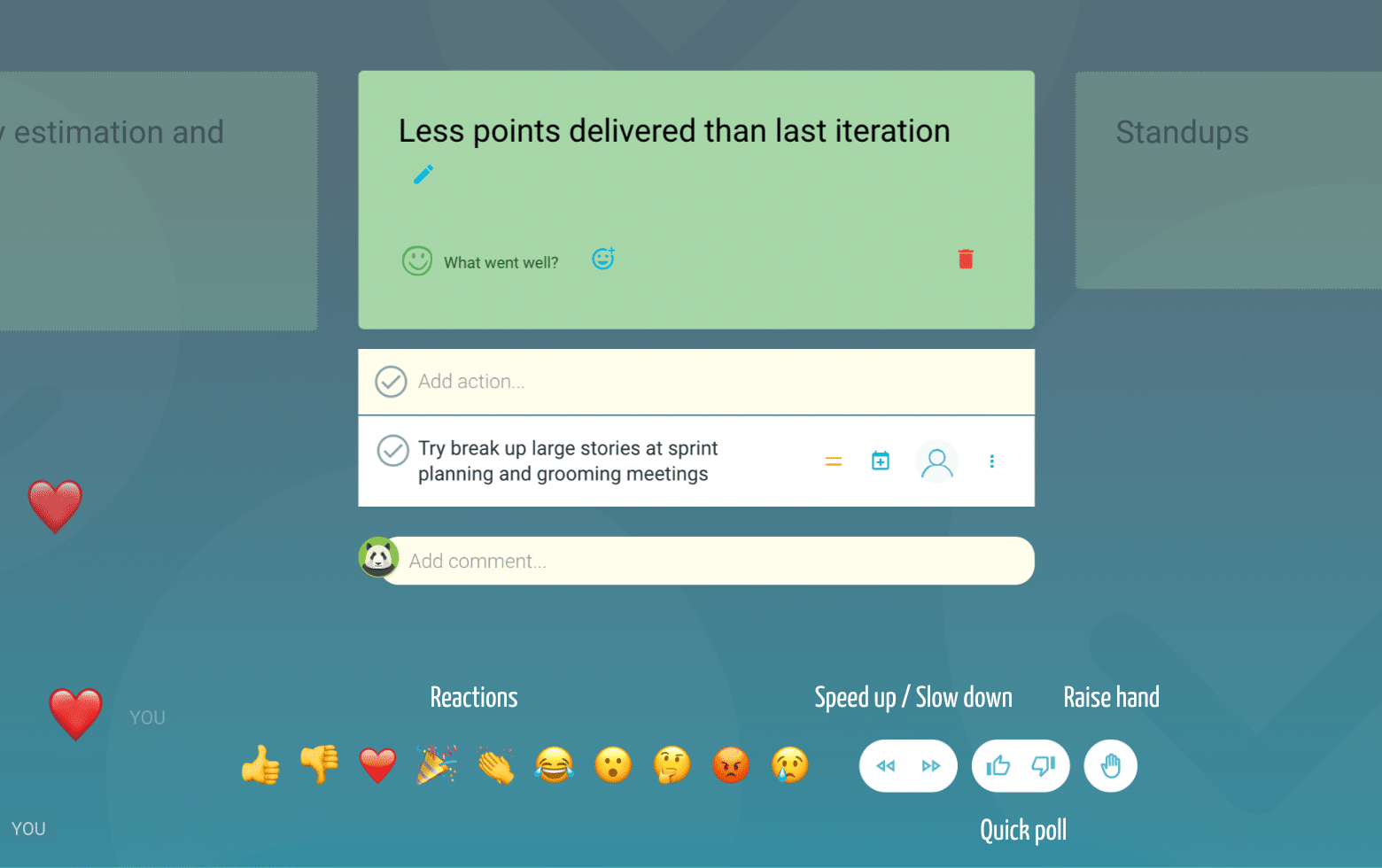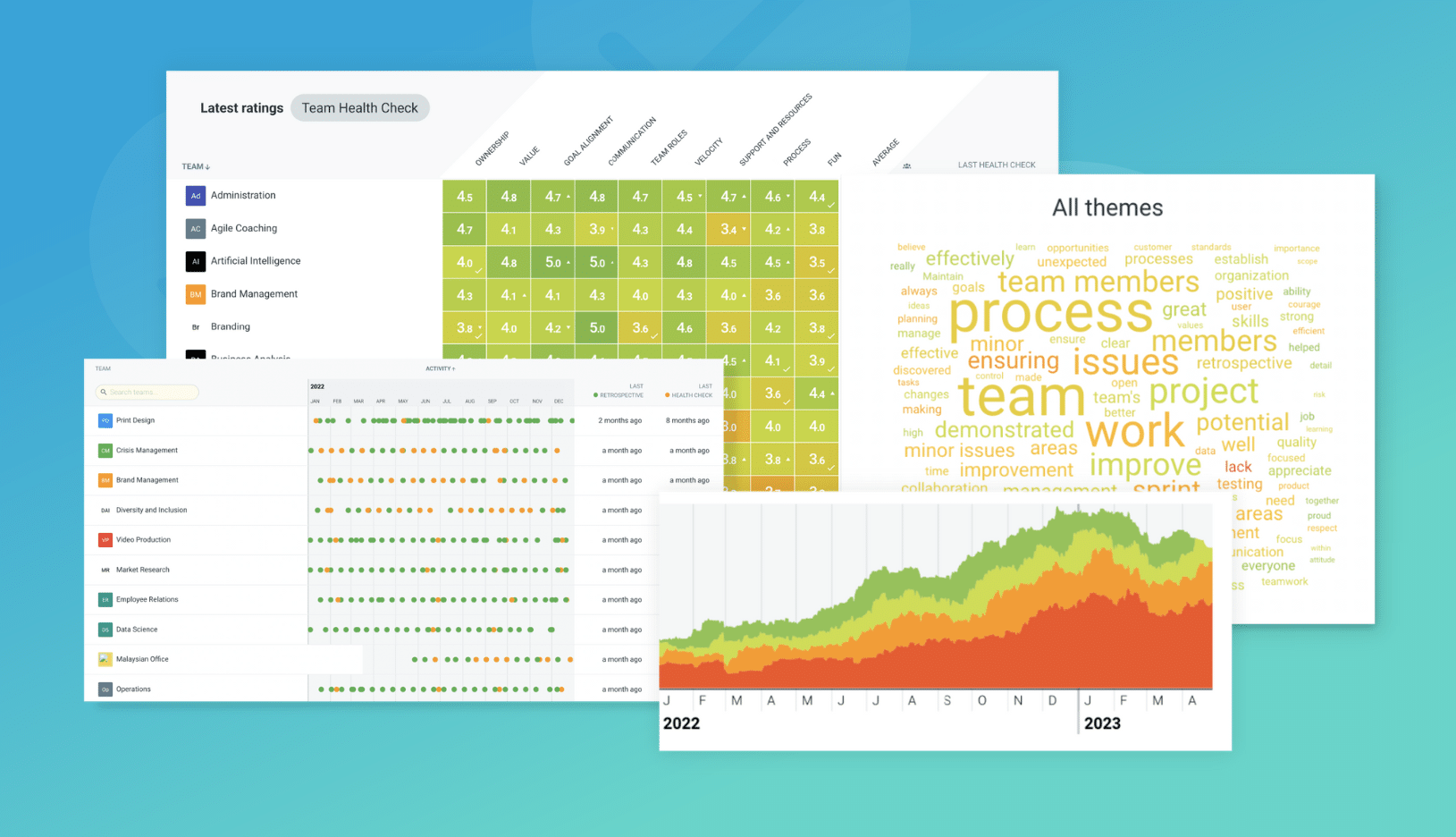What is a Start Stop Continue retrospective?
The start stop continue retrospective is an action-oriented retrospective style, generating an immediate list of practical ideas for continuous improvement. This retrospective technique hones in on the plus/delta aspects and is a must have tool for any scrum master or project manager.
A great way of introducing the start stop continue thinking style is to use the metaphor of a car at a traffic light (Green for start, red for stop and orange for continue). This exercise allows you to reallocate time and resources to where it matters the most.
Start
List ideas that the team should be doing but are not doing, innovative ideas worth discussing to address current problems.
Stop
List ideas that are not delivering results or might be driving people a little crazy – such as unnecessary bureaucracy.
Continue
List ideas that are creating value or should not be dismissed yet because the outcome is not yet known.
As best practice, remember to set the stage and ensure that people are reminded that is not a process of blame, but for identifying areas for change. If you have run this retrospective method several times before, you should see greater fidelity of ideas. If there are recurring items, this should be a treated as a red flag.

Suggested icebreaker questions for Start, Stop, Continue retrospective
- What have you recently started?
- Would you rather start a good habit or stop a bad one?
- What’s something from your childhood you’re keen to see continue?
Retro Rehearsal
Invite your team to rehearse the retro referencing something in a TV show
For example, what should the nightly news start, stop or continue doing?
Facilitation tips
- Start
- A new person has joined our project team. What would be a new task that they could be assigned?
- Our budget has now doubled. What should we do?
- Good news, our customer has extended our deadline. What’s something new we could include to delight them?
- Stop
- What is something on your to do list that you never get to?
- If we lost a person in our project team, what would we have to lose to still meet deadlines?
- What’s something that is driving you crazy?
- Continue
- What activities in this project are giving you the most joy?
- Whats something that we do that defines and promotes our culture?
- What is something that our customer loves us doing?
Ideas and tips for your Start Stop Continue retrospectives
- Using a timer, you can Timebox discussions. This will keep the conversation on track and the retrospective on course.
- Make the most of your presentation mode and drill down into ideas at the brainstorming, grouping as well as discussion stages of your retrospective. This will let those who contributed the input the chance to explain and feel heard.
- Keep your team agreements in view during your retrospective. Remember you can add to them at any time.
- Give people “silent time” to write, read and respond to what is being presented. It might just be a minute that can make all the difference.
- Use the way the team votes to manage culture. You’ll get interesting insights when people vote individually. The last thing you want is the sheep mentality where people simply follow what has already been done.
- Use a Return on Time Invested (ROTI) tool to monitor the effectiveness of your meeting.
How to run a Start Stop Continue retrospective in TeamRetro
Start Your Session in a Click
Log into TeamRetro and choose your template. Customise questions and the workflow to create your perfect retro for your team.
Create Your Team Easily – No Separate Accounts Needed
Brainstorm Individually – Free From Bias
Smart Grouping for Faster Insights
Fair, Flexible, and Fast Voting
Engage, React, and Capture Key Insights
Walk your team through ideas one by one with Presentation Mode. Stay in sync, spark real-time discussions, and capture feedback with comments, live reactions, and polls—all in one place.
Turn Ideas Into Action
Propose next steps with team buy-in, get AI-powered action suggestions, and keep everything in one place. Committed actions sync to your personal dashboard and integrate with your workflow tools—keeping you on track.
Save, Share, and Stay on Track
Get quick AI-powered summaries, add facilitator notes, and store retrospectives in your library for easy access. Schedule your next session and track published actions to keep your team accountable at the next retro.
Turn Team Data into Actionable Insights
Uncover trends, common themes, and key engagement metrics at a glance. Track sentiment shifts, analyze conversations, and monitor completed actions to drive continuous improvement.








